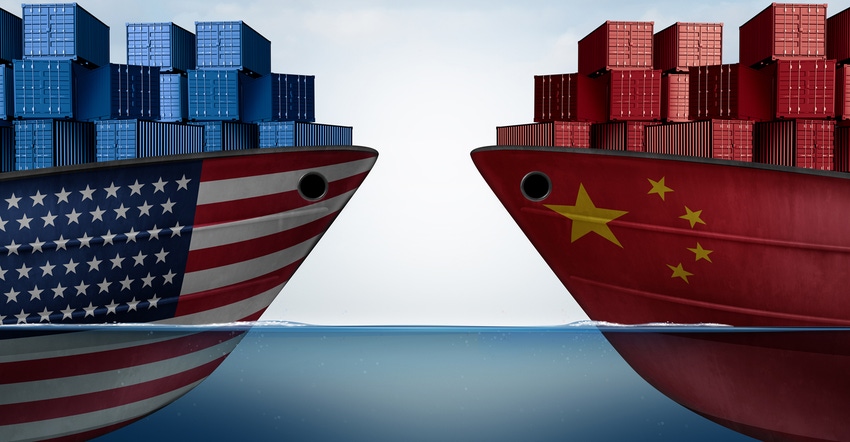May 2, 2018

With soybeans now added to the list of American products slated for tariffs in China, Ohio farmers may feel the financial pain as soybeans are the main crop and agricultural export.
China is Ohio's most important soybean export market, so a tariff on American soybeans likely would drive down crop demand and the price Ohio farmers receive for the crop, says Ian Sheldon, an agricultural economist, who serves as the Andersons Chair in Agricultural Marketing, Trade and Policy with Ohio State University's College of Food, Agricultural, and Environmental Sciences (CFAES).
"I knew it was coming," Sheldon says. "This is obviously going to hurt farmers."
In 2016, soybeans were Ohio's largest agricultural export, totaling $1.4 billion. Nearly half of what was exported (40%) went to China, according to USDA.
The demand for U.S. soybeans in China has been strong in recent years, fueled by the growing demand for meat in the Chinese diet and soybean meal to feed those livestock. Ohio is ranked sixth in the nation for soybean production.
It's unclear if or when China will follow through on the threat of 25% tariffs on American soybeans in China. But if the country does follow through, and American soybean prices in China go up, other countries could step up to supply more soybeans to China, and they could be sold cheaper without the tariffs. In the long term, that could cause the U.S. to permanently lose a significant share of the soybean market, Sheldon says.
"U.S. farmers may not be able to grab that market share back," he adds.
Across the U.S., about one in every three rows of soybeans grown is exported to China, explains Ben Brown, who runs CFAES's farm management program, which provides farm policy and market information to Ohio farmers and others.
A 25% tariff on American soybeans in China would change that ratio to one out of every five soybean rows grown going to China, Brown says.
"The soybeans that don't get sold to China are going to need a buyer somewhere," he says.
Typically, soybeans aren't planted until early May in Ohio, so farmers still may have time to change their mind about how much of the crop to plant. The tariff threat may change some of their planting decisions, but likely won't cause them to shift dramatically away from planting soybeans, says Barry Ward, an agricultural economist with CFAES.
"This is creating some uncertainty," Ward says. "(But) producers know that lots of things can change between now and harvest."
Soybeans are one of 106 U.S. products that China announced it will impose tariffs on. In addition to agriculture, the other two main areas targeted are aircraft and automobiles.
China's tariff threat is the latest move in an ongoing back and forth with China that began March 8 when President Donald Trump imposed 25% tariffs on imported steel and a 10% tariff on imported aluminum from most countries, including China.
If the Chinese impose the tariff on soybeans, as well as on other agricultural products that they have announced, including pork and wine, that could change farmers' opinion of Trump, which has been largely supportive, Sheldon says.
"This may be the straw that breaks the camel's back," he adds. "I think farmers haven't walked away from the administration yet, but they might, in time."
Source: OSU, CFAES
You May Also Like




